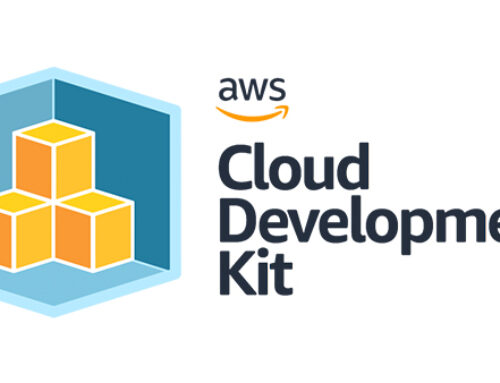
Agile methodology is a principle that is used to manage a project by breaking it down into several phases. The methodology ensures that there is constant collaboration with stakeholders and continuous improvement at every stage of the process. As work begins, a team cycles through the processes of planning, executing, and evaluating. The agile methodology follows four main values –
- Individuals and interactions are prioritized over processes and tools.
- Working software is prioritized over comprehensive documentation.
- Customer collaboration is prioritized over contract negotiations.
- Responding to changes is prioritized over following a plan.
The agile framework uses Scrum, Kanban, Adaptive Project Framework (APF), and Extreme Programming (XP) for its implementation.
Agile way of achieving results
In the wake of Covid-19, the stakes of adapting policies, working effectively in teams, and delivering cross-agency programs with tightened budgets at a fast pace have become a norm. For public services and mission-driven entities, this goal is hard to achieve with a constant rise in demanding situations. The response from these entities should be quick and nimble. Using agile methodologies, a government can transform how it plans, operates, and delivers products and services. At each level of a government organization, there are different roles and priorities, hence agile principles for each level will vary as well. Customizing agile ways can lead to increased productivity.
Agile in the government sector
Government sectors are historically seen as slow-moving and monolithic in action and spirit. Agile methodology in the private sector has increased both the performance and the organizational health of its many services. Top ranking organizations in organizational health follow agile methodologies. It is a strong indicator of engagement and service levels reflected through total shareholder returns. The hierarchical structure of the public sector often poses a challenge while implementing agile methodologies. Government budgets follow horizontal and annual cadences, there’s internal competition and a fixed pool of funding. Such situations can make fast iterations difficult.
Agile in different levels of public service
A comprehensible agile undertaking is a massive task requiring sustained commitments of energy and resources along with a focus on a customer’s end-to-end journey. Agile tools like working towards objectives and key results in quarterly reviews have to be tailor-made to address many constraints typical to government sectors. There are three levels of government, the topmost being the central government. It sets agile principles for agencies and cross-functional teams to follow. These teams in turn mold the mindsets of different people for maximum output. The most relevant principles need to be applied to different levels of the organization.
How to handle the levels of government through agile?
- Result driven management for government entities –
Central governments can prioritize strategic projects through agile methodologies. Usually, resources are allocated in such a manner that strategic goals are fulfilled through the budget process. As the process happens annually, a lag between investment in new initiatives and the impact it creates suffers an informational vacuum. Principles borrowed from enterprise agility, including objectives and key results, and quarterly business reviews can transform planning and resource allocation for central governments. A shift from measuring success and managing outcomes through key performance indicators to objectives and key results can turn more goals into more specific ones for teams to work towards. OKRs can be measured over a short time, and assessment and reallocation of resources can be done during such reviews. These reviews can also help governments shift focus from tracking preplanned milestones to assessing outcomes. - Collaboration for agencies –
Agencies, or standalone entities with distinct missions can excel through cross-collaboration. Agencies are structured around the expertise of functional or sectoral teams. The collaboration of such teams can help achieve the organization’s full potential. For instance, leaders of sectors like education, healthcare, and transit can collaborate. This leads governments to expend lesser resources to navigate complex communications, processes, and governance structures to ensure engagement. Agile focuses on outcomes rather than on function. This approach can limit functional silos and focus on using a wide array of skills to attain a shared objective. For example, a public transport agency can boost ridership through a cross-functional team of transport planning, operations, marketing, data engineering, and customer services. Sharing accountability between teams also encourages leaders to share resources along with managing the workforce for achieving a singular result rather than focusing on directing minute technical routines to establish a certain goal. - Updated mindsets for teams –
At the level of team organization, the most important principles of agility are the people and their mindsets. Culture can make or break agile transformations. Many organizations cite culture as a primary obstacle to an agile transformation. Government teams rely on meetings and escalations to move projects forward. But in an agile environment, there are autonomous and cross-functional teams to work towards such objectives. These teams can apply agile practices, including sprint planning and daily scrum meetings. A safe environment marks agile organizations to create and experiment. In these environments, people learn, and mistakes are not met with punishments. An entrepreneurial drive of courage and conviction takes place. Role mobility is critical in such environments. These changes can happen when the core of the agile values, the mindset of people, is aligned with the goals of the agile methodology.
Thus, public sector agility has numerous benefits, but the transition to agile practices can be particularly challenging for government organizations that traditionally do not promote such traits in the workforce. There is a need for visionary leaders to exert power and influence such that organizational and cultural changes can happen to accommodate the agile framework. Emphasis on performance over process, building organizational capabilities, and accelerating transitions can be done through the support of agile coaches. Agile will nurture and innovate new and promising ideas, unleash talent, and mark the successful transformation of the public sector.


